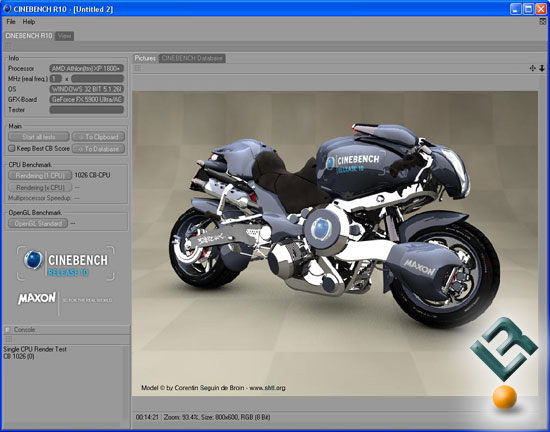Intel Core 2 Extreme Processor QX9650 Review
Cinebench R10
MAXON; CINEBENCH R10:
CINEBENCH is the free benchmarking tool for Windows and Mac OS based on the powerful 3D software CINEMA 4D. Consequently, the results of tests conducted using CINEBENCH 10 carry significant weight when analyzing a computer’s performance in everyday use. Especially a system’s CPU and the OpenGL capabilities of its graphics card are put through their paces (even multiprocessor systems with up to 16 dedicated CPUs or processor cores). The test procedure consists of two main components: The first test sequence is dedicated to the computer’s main processor. A 3D scene file is used to render a photo reaslistic image. The scene makes use of various CPU-intensive features such as reflection, ambient occlusion, area lights and procedural shaders. In the first run, the benchmark only uses one CPU (or CPU core), to ascertain a reference value. On machines that have multiple CPUs or CPU cores, and also on those who simulate multiple CPUs (via HyperThreading or similar technolgies), MAXON CINEBENCH will run a second test using all available CPU power. Again, higher Frames/Second and lower rendering time in seconds equal better performance.

Cinebench R10 was able to put a 100% load across all the cores on all of the processors, which makes this a great benchmark to look at multi-core platforms.

Results: Our SMP Cinebench R10 64-bit results show an impressive increase in performance when moving from dual-core processors to quad-core processors. The 3.2GHz AMD Athlon 64 X2 6400+ Black Edition processor was just a single second behind the 2.66GHz Intel Core 2 Duo E6750 processor, which goes to show MHz isn’t everything! The Intel QX6850 and QX9650 are both 3GHz parts, but it’s obvious that the additional cache helped out on this great 64-bit benchmark.

Comments are closed.